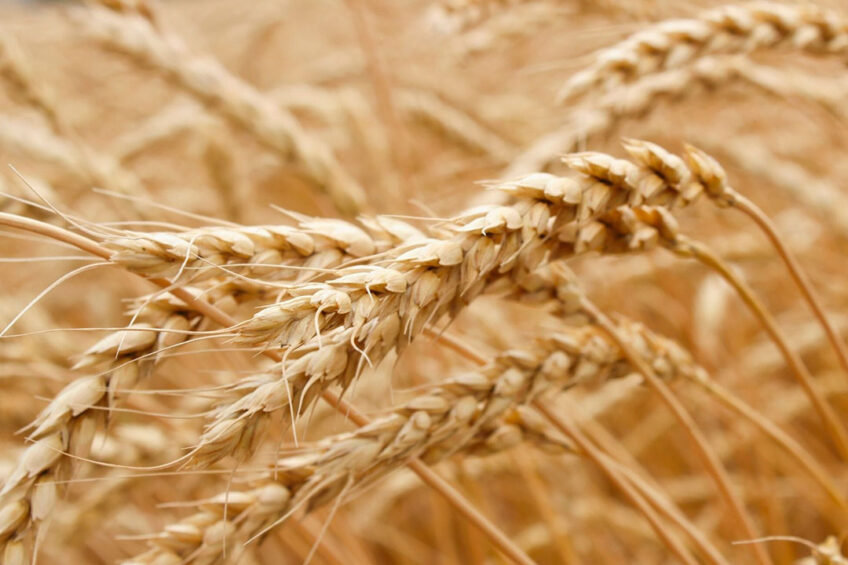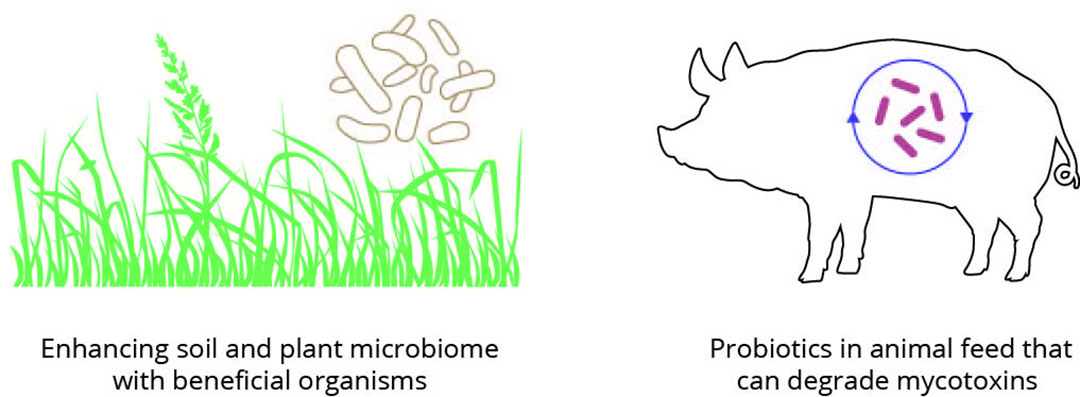Nature vs Mycotoxins: Strategies to reduce mycotoxins in feed

Mycotoxins are toxic compounds produced by certain types of fungi that can contaminate grains and animal feed, posing a significant threat to human and animal health. There are several measures that can be taken to avoid contamination.
MYCOTOXIN SPECIAL 2023 – read all articles
Occurrence of mycotoxins in grains appear to be as high as 60-80%, with an estimate 25% presenting concentrations above the European Union and Codex Alimentarius standards.
To avoid mycotoxin contamination in foods and animal feed, several measures are taken and these are the most common.
- Good agricultural practices: Proper agricultural practices can help prevent fungal growth and mycotoxin production in the field. This includes using certified seed, appropriate crop rotation, and maintaining proper soil and crop management..
- Crop monitoring: Regularly monitor crops for signs of fungal infections and contamination. This can involve visual inspections, use of technology like remote sensing, and testing for mycotoxin levels in the field.
- Proper harvesting techniques: Harvesting at the right time and under appropriate conditions can help minimise fungal contamination. Delayed harvest can increase the risk of mycotoxin production in the field.
- Drying and storage:Proper drying of harvested grains is essential to reduce moisture content and prevent further fungal growth. Adequate storage conditions, including proper ventilation and temperature control, can also help prevent mycotoxin development during storage.
- Sorting and cleaning: Mechanically removing visibly contaminated or mouldy grains and debris can help reduce mycotoxin levels in the final product.
- Fungicides: In some cases, the careful use of fungicides can help manage fungal growth and mycotoxin production.
- Regular testing: Implement regular mycotoxin testing throughout the supply chain to monitor and ensure that the products meet regulatory and safety standards.
These measures comprise of a combination of preventive methods and the separation of contaminated grains. The contaminated grains can be diluted in larger quantities to adhere to safety regulations or diverted for other purposes such as animal feed or ethanol production. Collectively, these steps are both time consuming and costly, and mycotoxins result in significant economic losses around the globe. In addition, the use of highly contaminated crops in animal feed can drastically reduce performance in animal production, causing lower feed-to-weight conversion rates, diseases, and even death.
Role of microbiome in mycotoxin production
Fungal species that produce mycotoxins are usually phytopathogens that thrive in unbalanced environments, which produce unbalanced soil and plant microbiomes. In the past 25 years, many researchers have made significant work in finding biological agents that can avoid the growth of mycotoxin producers or to detoxify mycotoxins. These are called biocontrol agents and many commercial species can be found in the market. Research has shown that filamentous fungi such as non-pathogenic Aspergillus, non-pathogenic Fusarium spp., Rhizopus spp., Trichoderma spp., yeast such as Trichosporon and Saccharomyces, and bacteria such as Bacillus, Pseudomonas and lactic acid bacteria, can outgrow pathogenic fungi in the field and significantly minimise mycotoxin production. These are usually microorganisms isolated from healthy soils that can be affordably produced and inoculated in seeds or in the field to produce better environments for plant growth (Figure 1).
Figure 1 – Key biocontrol strategies for preventing fungal growth and mitigating mycotoxin impact in grains and animal production.

Natural fungicides: Keep mould away
Fungicides are largely used in the field and during grain storage. These products must be manipulated with extreme caution and pose as a threat for handlers. Many compounds produced by plants are effective in inhibiting mould growth, acting as the immune system of plants in general. For example, many essential oils and essential oil compounds can avoid mould growth at relatively low doses. Due to their volatility, essential oil compounds can be sprayed as fumigants in stored grains and mitigate the risks of mycotoxin production by damaging and inhibiting mould growth.
Our research has shown that allyl isothiocyanate (found in mustard, wasabi and other brassicas) can inhibit the growth of mould found in stored grains, such as Aspergillus and Penicillium, at levels as low as 100 ppb (parts per billion). This compound was found to protect several crops during storage, including corn, wheat and nuts. However, for best efficiency, it is important to circulate the air inside the silo to improve homogenisation of the volatilised compound. Price-wise, this compound can vary a lot, going anywhere from USD$6 to 100/L, and, to our knowledge, no commercial system for this application is available. This strategy could be an opportunity for the industry in developing countries since these are some of the main producers of essential oils and essential oil compounds worldwide.
Avoid insects and weed.
Our research group has recently conducted a systematic review followed by met-analysis to evaluate the effect current genetic modifications applied in commercial maize in the appearance and concentration of mycotoxins in these grains (Table 1). Although polemic in some countries, these grains are affordable and readily available worldwide. Our initial evaluation started with over 2000 studies, which were filtered down to 11 that comply with the selection process and were included in our met-analysis.
Transgenic maize exhibited a substantial reduction of 54% in the overall mycotoxin content when contrasted with conventional maize. This trend was found for fumonisins, aflatoxins and zearalenone, revealing a significant decrease of 56%, 49% and 51% in GM maize, respectively. Most of these crops were genetically engineered to deflect insect infestation, to present herbicide or antibiotic resistance, and only a few were designed to resist the contamination of Asperillus flavus, an aflatoxin-producer. However, insects can damage plants and grains, building a gateway to mould proliferation and production of mycotoxins. In addition, weed infestation may serve as a vector for maize contamination by toxigenic fungi, and the use of GM crops can yield a safer harvest for human and animal consumption, mainly in not-so-technological countries. Other safe strategies that could keep insects and weeds far from crops must yield similar results.
Holistic approaches is necessary
In the ongoing fight against mycotoxins, a holistic approach is necessary. From field to storage, proactive measures such as vigilant monitoring, optimal practices, and stringent storage conditions serve as strong defences. Nature´s biocontrol agents, including microorganisms and plant-derived fungicides promise in deterring fungal growth and scavenging/degrading mycotoxins. Genetically engineered maize, reducing mycotoxin content, demonstrates the fusion of science and agriculture. As we unite these strategies, we pave the way for a resilient food and feed supply, safeguarding both health and industry.
Dr Fernando Bittencourt Luciano is on the International advisory committee and presented his presentation on the topic of Nature vs Mycotoxins: Affordable strategies to reduce mycotoxins in foods and animal feed – at the World Mycotoxin Forum.







